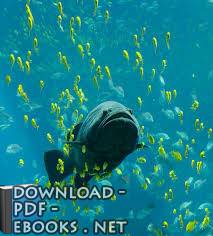كتاب Enrofloxacin serum bioactivity in bottlenose dolphins, Tursiops truncatus, following oral administration of 5 mg per kg in whole fish
Enrofloxacin serum bioactivity in bottlenose dolphins, Tursiops truncatus, following oral administration of 5 mg per kg in whole fish من كتب طب بيطرى INTRODUCTION Enrofloxacin is a fluoroquinolone antimicrobial agent structu- rally related to nalidixic acid and norfloxacin and is licensed for veterinary use only. The fluoroquinolones have a bactericidal spectrum encompassing gram-negative, gram-positive aerobic bacteria and mycoplasmas (Reeves et al ., 1984; Scheer, 1987a). Enrofloxacin is an important antimicrobial agent that is proving to be very useful in treatment of infectious diseases in many domestic animal species (Scheer, 1987a; Jenkins & Friedlander, 1988; Prescott & Yielding, 1990; Van Landuyt et al ., 1990). The primary mechanism of action of the fluoroquinolones appears to be interference wit ht he bacterial enzyme DNA gyrase (Vancutsem et al ., 1990; Hooper & Wolfson, 1991). This unique mechanism of action differs from that of b ±lactams, tetracy- clines, aminoglycosides, macrolides, chloramphenicol and folic acid antagonists and could explain the lack of cross-resistance between these other antimicrobial agents and the fluoroquino- lones (Scheer, 1987a). Enrofloxacin has close to 100% oral bioavailability and attains excellent body tissue and fluid compartment concentrations in canines and felines (Scheer, 1987b). These characteristics make this antimicrobial, when given orally, particularly promising in use with marine mammals. Although there have been infre- quent reports of neurological, haematological, gastrointestinal and cartilaginous toxicities associated wit henrofloxacin, t he drug has been very well tolerated in a variety of domestic animal species (Altreuther, 1987; Jenkins & Friedlander, 1988). In this study we investigated the serum antimicrobial activity concentrations (SAAC) attained when enrofloxacin tablets were given to bottlenose dolphins in their morning ration of fish. This protocol would determine if this method of dosing enrofloxacin is feasible and would assist veterinarians involved in marine mammal practice to expand their antimicrobial treatment armamentarium. MATERIALS AND METHODS Study design Following approval from the Animal Care Committee at our facility, eight healthy adult bottlenose dolphins, Tursiops truncatus (six male, two female) were selected for this study. They ranged in weight from 154 to 331 kg and were on no other medical treatments. Eac hanimal received a single oral dose of enrofloxacin at a dosage of 5 mg/kg body weight. The dose was rounded to the nearest half tablet or 34 mg increment (68 mg tablets) and placed intact (not crushed) into a whole fish and administered wit ht he morning fis hration. Experimental drug received from Bayer Corporation for our study consisted of the original `purple tablet' oral preparation of enrofloxacin, which dissolves rapidly in water. The new chewable tablets now available do not disintegrate as easily as the former purple tablets and therefore may cause a greater lag between administration and absorption. This method of drug delivery with these animals is standard practice which is convenient and eliminates drug loss # 1999 Blackwell Science Ltd 170 J. vet. Pharmacol. Therap. 22, 170±173, 1999. PHARMACOKINETICS Enrofloxacin serum bioactivity in bottlenose dolphins, Tursiops truncatus , following oral administration of 5 mg/kg in whole fish Linnehan, R. M., Ulrich, R. W., Ridgway, S. Enrofloxacin serum bioactivity in bottlenose dolphins, Tursiops truncatus , following oral administration of 5 mg/kg in whole fish. J. vet. Pharmacol. Therap. 22, 170±173. Eight adult bottlenose dolphins Tursiops truncatus (six male, two female) were employed in a single-dose study of orally administered enrofloxacin dosed at 5 mg/kg body weight. Blood samples were obtained from all animals at 0, 2, 4, 8, 12 and 24 h following administration of the dose in the animals morning ration of fish. Serum antimicrobial activity concentrations (SAAC) were determined using bioassay. The mean elimination half-life ( t ) of enrofloxacin and its major metabolites was 6.4 + 2.0 h with a range of 3±9.4 h. The time of maximal serum concentration ( t max ) occurred at approximately 4 hwit ha range of 2±8 h following a single oral dose of 5 mg/kg. This variation in t max most likely resulted from individual differences in absorption because of variations in the storage and digestion of the fish ration containing the drug dose within the compartmentalized cetacean stomach. (Paper received 18 December 1997; accepted for publication 5 Marc h1999) Robert W. Ulrich, University of Southern California, School of Pharmacy, 1985 Zonal Ave., Los Angeles, CA 90033, USA-
من كتب طب بيطرى - مكتبة كتب الطب.
معلومات عن كتاب Enrofloxacin serum bioactivity in bottlenose dolphins, Tursiops truncatus, following oral administration of 5 mg per kg in whole fish:
INTRODUCTION
Enrofloxacin is a fluoroquinolone antimicrobial agent structu-
rally related to nalidixic acid and norfloxacin and is licensed for
veterinary use only. The fluoroquinolones have a bactericidal
spectrum encompassing gram-negative, gram-positive aerobic
bacteria and mycoplasmas (Reeves
et al
., 1984; Scheer, 1987a).
Enrofloxacin is an important antimicrobial agent that is proving
to be very useful in treatment of infectious diseases in many
domestic animal species (Scheer, 1987a; Jenkins & Friedlander,
1988; Prescott & Yielding, 1990; Van Landuyt
et al
., 1990).
The primary mechanism of action of the fluoroquinolones
appears to be interference wit ht he bacterial enzyme DNA gyrase
(Vancutsem
et al
., 1990; Hooper & Wolfson, 1991). This unique
mechanism of action differs from that of
b
±lactams, tetracy-
clines, aminoglycosides, macrolides, chloramphenicol and folic
acid antagonists and could explain the lack of cross-resistance
between these other antimicrobial agents and the fluoroquino-
lones (Scheer, 1987a).
Enrofloxacin has close to 100% oral bioavailability and attains
excellent body tissue and fluid compartment concentrations in
canines and felines (Scheer, 1987b). These characteristics make
this antimicrobial, when given orally, particularly promising in
use with marine mammals. Although there have been infre-
quent reports of neurological, haematological, gastrointestinal
and cartilaginous toxicities associated wit henrofloxacin, t he
drug has been very well tolerated in a variety of domestic animal
species (Altreuther, 1987; Jenkins & Friedlander, 1988).
In this study we investigated the serum antimicrobial activity
concentrations (SAAC) attained when enrofloxacin tablets were
given to bottlenose dolphins in their morning ration of fish. This
protocol would determine if this method of dosing enrofloxacin is
feasible and would assist veterinarians involved in marine mammal
practice to expand their antimicrobial treatment armamentarium.
MATERIALS AND METHODS
Study design
Following approval from the Animal Care Committee at our
facility, eight healthy adult bottlenose dolphins,
Tursiops
truncatus
(six male, two female) were selected for this study.
They ranged in weight from 154 to 331 kg and were on no other
medical treatments. Eac hanimal received a single oral dose of
enrofloxacin at a dosage of 5 mg/kg body weight. The dose was
rounded to the nearest half tablet or 34 mg increment (68 mg
tablets) and placed intact (not crushed) into a whole fish and
administered wit ht he morning fis hration. Experimental drug
received from Bayer Corporation for our study consisted of the
original `purple tablet' oral preparation of enrofloxacin, which
dissolves rapidly in water. The new chewable tablets now
available do not disintegrate as easily as the former purple tablets
and therefore may cause a greater lag between administration
and absorption. This method of drug delivery with these animals
is standard practice which is convenient and eliminates drug loss
#
1999 Blackwell Science Ltd
170
J. vet. Pharmacol. Therap.
22,
170±173, 1999.
PHARMACOKINETICS
Enrofloxacin serum bioactivity in bottlenose dolphins,
Tursiops truncatus
,
following oral administration of 5 mg/kg in whole fish
Linnehan, R. M., Ulrich, R. W., Ridgway, S. Enrofloxacin serum bioactivity in
bottlenose dolphins,
Tursiops truncatus
, following oral administration of 5 mg/kg
in whole fish.
J. vet. Pharmacol. Therap.
22,
170±173.
Eight adult bottlenose dolphins
Tursiops truncatus
(six male, two female) were
employed in a single-dose study of orally administered enrofloxacin dosed at 5
mg/kg body weight. Blood samples were obtained from all animals at 0, 2, 4, 8,
12 and 24 h following administration of the dose in the animals morning ration
of fish. Serum antimicrobial activity concentrations (SAAC) were determined
using bioassay.
The mean elimination half-life (
t
) of enrofloxacin and its major metabolites
was 6.4
+
2.0 h with a range of 3±9.4 h. The time of maximal serum
concentration (
t
max
) occurred at approximately 4 hwit ha range of 2±8 h
following a single oral dose of 5 mg/kg. This variation in
t
max
most likely
resulted from individual differences in absorption because of variations in the
storage and digestion of the fish ration containing the drug dose within the
compartmentalized cetacean stomach.
(Paper received 18 December 1997; accepted for publication 5 Marc h1999)
Robert W. Ulrich, University of Southern California, School of Pharmacy, 1985
Zonal Ave., Los Angeles, CA 90033, USA
عدد مرات التحميل : 13605 مرّة / مرات.
تم اضافته في : الجمعة , 25 مارس 2016م.
حجم الكتاب عند التحميل : 83.7 كيلوبايت .
تعليقات ومناقشات حول الكتاب:
Enrofloxacin serum bioactivity in bottlenose dolphins, Tursiops truncatus, following oral administration of 5 mg per kg in whole fish من كتب طب بيطرى
Enrofloxacin is a fluoroquinolone antimicrobial agent structu-
rally related to nalidixic acid and norfloxacin and is licensed for
veterinary use only. The fluoroquinolones have a bactericidal
spectrum encompassing gram-negative, gram-positive aerobic
bacteria and mycoplasmas (Reeves
et al
., 1984; Scheer, 1987a).
Enrofloxacin is an important antimicrobial agent that is proving
to be very useful in treatment of infectious diseases in many
domestic animal species (Scheer, 1987a; Jenkins & Friedlander,
1988; Prescott & Yielding, 1990; Van Landuyt
et al
., 1990).
The primary mechanism of action of the fluoroquinolones
appears to be interference wit ht he bacterial enzyme DNA gyrase
(Vancutsem
et al
., 1990; Hooper & Wolfson, 1991). This unique
mechanism of action differs from that of
b
±lactams, tetracy-
clines, aminoglycosides, macrolides, chloramphenicol and folic
acid antagonists and could explain the lack of cross-resistance
between these other antimicrobial agents and the fluoroquino-
lones (Scheer, 1987a).
Enrofloxacin has close to 100% oral bioavailability and attains
excellent body tissue and fluid compartment concentrations in
canines and felines (Scheer, 1987b). These characteristics make
this antimicrobial, when given orally, particularly promising in
use with marine mammals. Although there have been infre-
quent reports of neurological, haematological, gastrointestinal
and cartilaginous toxicities associated wit henrofloxacin, t he
drug has been very well tolerated in a variety of domestic animal
species (Altreuther, 1987; Jenkins & Friedlander, 1988).
In this study we investigated the serum antimicrobial activity
concentrations (SAAC) attained when enrofloxacin tablets were
given to bottlenose dolphins in their morning ration of fish. This
protocol would determine if this method of dosing enrofloxacin is
feasible and would assist veterinarians involved in marine mammal
practice to expand their antimicrobial treatment armamentarium.
MATERIALS AND METHODS
Study design
Following approval from the Animal Care Committee at our
facility, eight healthy adult bottlenose dolphins,
Tursiops
truncatus
(six male, two female) were selected for this study.
They ranged in weight from 154 to 331 kg and were on no other
medical treatments. Eac hanimal received a single oral dose of
enrofloxacin at a dosage of 5 mg/kg body weight. The dose was
rounded to the nearest half tablet or 34 mg increment (68 mg
tablets) and placed intact (not crushed) into a whole fish and
administered wit ht he morning fis hration. Experimental drug
received from Bayer Corporation for our study consisted of the
original `purple tablet' oral preparation of enrofloxacin, which
dissolves rapidly in water. The new chewable tablets now
available do not disintegrate as easily as the former purple tablets
and therefore may cause a greater lag between administration
and absorption. This method of drug delivery with these animals
is standard practice which is convenient and eliminates drug loss
#
1999 Blackwell Science Ltd
170
J. vet. Pharmacol. Therap.
22,
170±173, 1999.
PHARMACOKINETICS
Enrofloxacin serum bioactivity in bottlenose dolphins,
Tursiops truncatus
,
following oral administration of 5 mg/kg in whole fish
Linnehan, R. M., Ulrich, R. W., Ridgway, S. Enrofloxacin serum bioactivity in
bottlenose dolphins,
Tursiops truncatus
, following oral administration of 5 mg/kg
in whole fish.
J. vet. Pharmacol. Therap.
22,
170±173.
Eight adult bottlenose dolphins
Tursiops truncatus
(six male, two female) were
employed in a single-dose study of orally administered enrofloxacin dosed at 5
mg/kg body weight. Blood samples were obtained from all animals at 0, 2, 4, 8,
12 and 24 h following administration of the dose in the animals morning ration
of fish. Serum antimicrobial activity concentrations (SAAC) were determined
using bioassay.
The mean elimination half-life (
t
) of enrofloxacin and its major metabolites
was 6.4
+
2.0 h with a range of 3±9.4 h. The time of maximal serum
concentration (
t
max
) occurred at approximately 4 hwit ha range of 2±8 h
following a single oral dose of 5 mg/kg. This variation in
t
max
most likely
resulted from individual differences in absorption because of variations in the
storage and digestion of the fish ration containing the drug dose within the
compartmentalized cetacean stomach.
(Paper received 18 December 1997; accepted for publication 5 Marc h1999)
Robert W. Ulrich, University of Southern California, School of Pharmacy, 1985
Zonal Ave., Los Angeles, CA 90033, USA
 مهلاً !
مهلاً !قبل تحميل الكتاب .. يجب ان يتوفر لديكم برنامج تشغيل وقراءة ملفات pdf
يمكن تحميلة من هنا 'تحميل البرنامج'

نوع الكتاب : PDF.
اذا اعجبك الكتاب فضلاً اضغط على أعجبني و يمكنك تحميله من هنا:


كتب اخرى في كتب طب بيطرى

Fallibility of faecal consistency as a criterion of success in the evaluation of oral fluid therapy for calf diarrhoea PDF
قراءة و تحميل كتاب Fallibility of faecal consistency as a criterion of success in the evaluation of oral fluid therapy for calf diarrhoea PDF مجانا
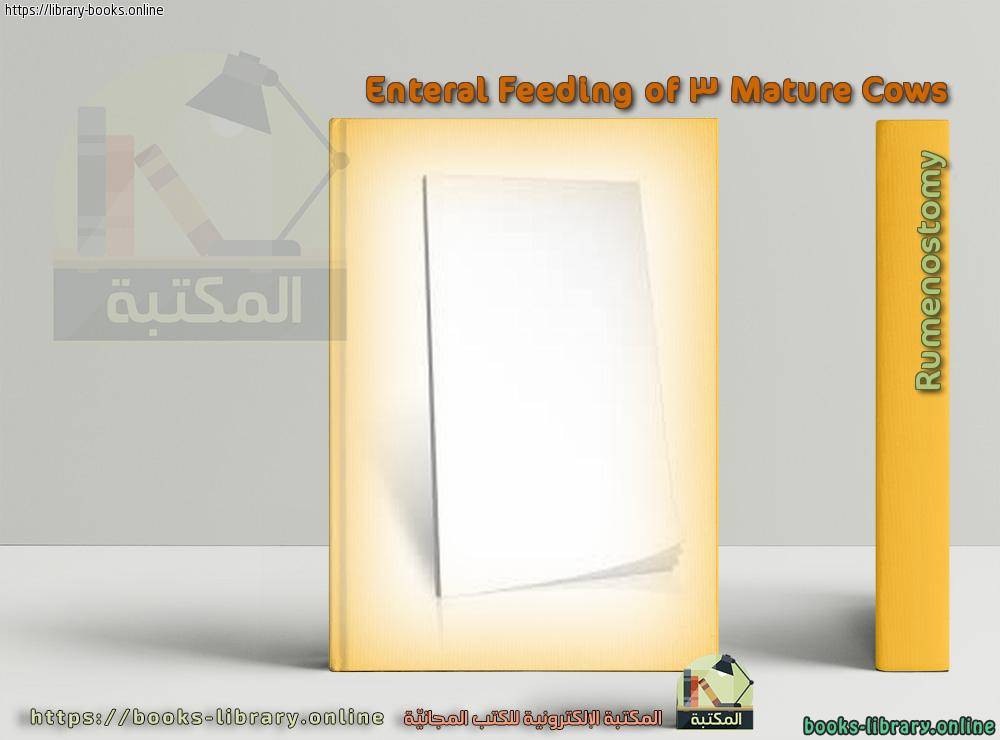
Enteral Feeding of 3 Mature Cows by Rumenostomy (p 779-781) PDF
قراءة و تحميل كتاب Enteral Feeding of 3 Mature Cows by Rumenostomy (p 779-781) PDF مجانا
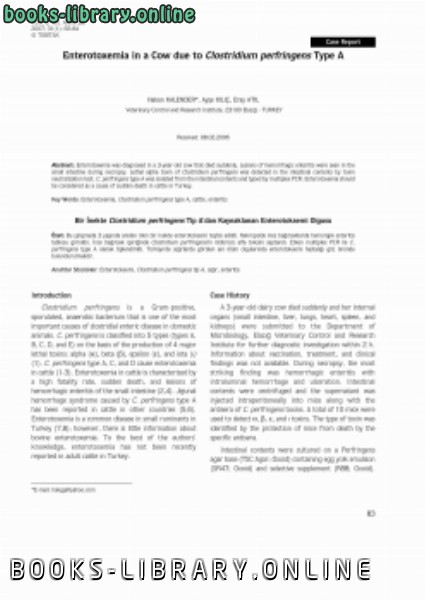
Enterotoxemia in a Cow due to Clostridium perfringens Type A PDF
قراءة و تحميل كتاب Enterotoxemia in a Cow due to Clostridium perfringens Type A PDF مجانا
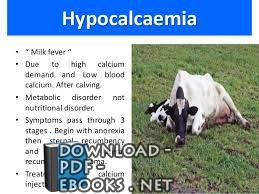
Factors Affecting the Success Rate of Treatment of Recumbent Dairy Cows Suffering from Hypocalcaemia PDF
قراءة و تحميل كتاب Factors Affecting the Success Rate of Treatment of Recumbent Dairy Cows Suffering from Hypocalcaemia PDF مجانا
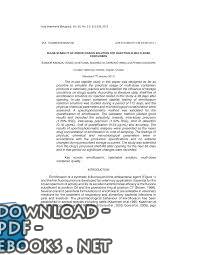
Enrofloxacin pharmacokinetics in the European cuttlefish, Sepia officinalis, after a single i.v. injection and bath administration PDF
قراءة و تحميل كتاب Enrofloxacin pharmacokinetics in the European cuttlefish, Sepia officinalis, after a single i.v. injection and bath administration PDF مجانا

Enrofloxacin to Control Anaplasma marginale Infections PDF
قراءة و تحميل كتاب Enrofloxacin to Control Anaplasma marginale Infections PDF مجانا
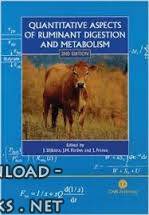
Flow cytometric evaluation of selected antimicrobial efficacy for clearance of Anaplasma marginale in short-term erythrocyte cultures PDF
قراءة و تحميل كتاب Flow cytometric evaluation of selected antimicrobial efficacy for clearance of Anaplasma marginale in short-term erythrocyte cultures PDF مجانا
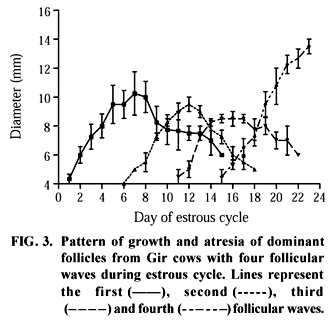
Exogenous control of follicular wave emergence in cattle PDF
قراءة و تحميل كتاب Exogenous control of follicular wave emergence in cattle PDF مجانا
